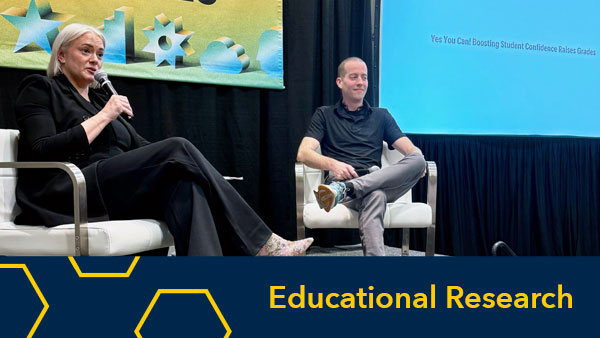Rebecca Quintana, Associate Director, Learning Experience Design at the Center for Academic Innovation
This story first appeared in Media & Learning and is published with permission.

At the start of the pandemic, my colleagues and I developed an open course called Resilient Teaching Through Times of Crisis and Change. We wanted to create a learning design framework for instructors to use as they navigated immediate and future instructional challenges. We also wanted to create a course experience that allowed course participants to engage with each other around the challenges they were facing in their unique instructional contexts. We took a community-oriented approach to design and incorporated a digital workbook that offered a scaffolded approach to enable participants to build their teaching plans across the duration of the course. Participants had the option to share and receive feedback from peers on their teaching plans using a feature in the workbook as well. Through this course, participants found opportunities to prepare to teach in dynamic and shifting contexts. More detail about the Resilient Design for Learning framework that we advance in this course can be found through our recently published, open-access book chapter.
As we were designing the course, we knew that we needed to design with two contexts in mind. The first context was instructional challenges brought about by the pandemic, namely the abrupt shift to “emergency remote instruction” in the spring of 2020 and then the shift to fully online learning environments for the following academic year. The second context was the “post-pandemic era,” a design context which we knew little about as we were developing the course. Yet, we knew from the outset that we wanted the course to remain evergreen and be relevant to instructors who are faced with disruptions in their educational environments for any number of reasons and who must quickly adapt their course designs.
In my presentation at the Media & Learning Online Spring conference, I focused on aspects of the Resilient Design for Learning framework that seem particularly salient at the present moment. By way of introduction, the framework consists of three principles: designing for extensibility (designing for anticipated changes to a learning environment), designing for flexibility (creating conditions that allow implementation of extensible designs), and designing for redundancy (developing “duplicative” instructional resources and strategies that can serve as replacements, if necessary). As we move towards a post-pandemic era, instructors may want to focus on these facets of the framework.
- The extensibility principle speaks to growing the first version of a course or online learning design through a process of careful and iterative refinement. Now that instructors have experienced how their course designs function “in the wild,” they can turn their attention to refining and strengthening existing interactions among learners, content, and instructors.
- The flexibility principle encourages instructors to attend to situational factors related to their instructional environments and to develop strategies that are well suited for those contexts. Now that instructors may have a more nuanced understanding of the affordances of both online and face-to-face environments, they can consider how they might facilitate new interactions that they did not have the time or resources to implement in their initial designs.
- The redundancy principle asks instructors to evaluate “brittle” aspects of their course designs and to shore up those areas by creating redundant resources and activities. In their book on Universal Design for Learning in higher education called Reach Everyone, Teach Everyone, Tobin and Behling (2020) advocate for a “plus one” approach to allow for incremental innovation. Now that instructors may have already enacted the redundancy principle, it is time to reflect on what additional complementary materials or activities can be added to a course design.
As we look towards the horizon of a post-pandemic era, we can take the lessons from teaching during the pandemic with us. A resilient teaching approach continues to be relevant as we embrace new opportunities and face new challenges in learning design and instruction.


